How to Make Vinaigrette
Published Dec 29, 2023
Learn to make a vinaigrette with a few ingredients! This recipe works for salad dressing, as a marinade for meat, or even to drizzle on roasted veggies!
This post may contain affiliate links. Please read our disclosure policy.
Whipping up a homemade vinaigrette is like adding a personal touch to your salads – it’s simple, quick, and lets you play around with flavors. This basic vinaigrette recipe is a great starting point. It combines the tangy goodness of vinegar with the smoothness of olive oil, a hint of mustard for some depth, and optional garlic for an extra kick. If you’ve always wanted to make vinaigrette, but weren’t sure how this guide is for you!
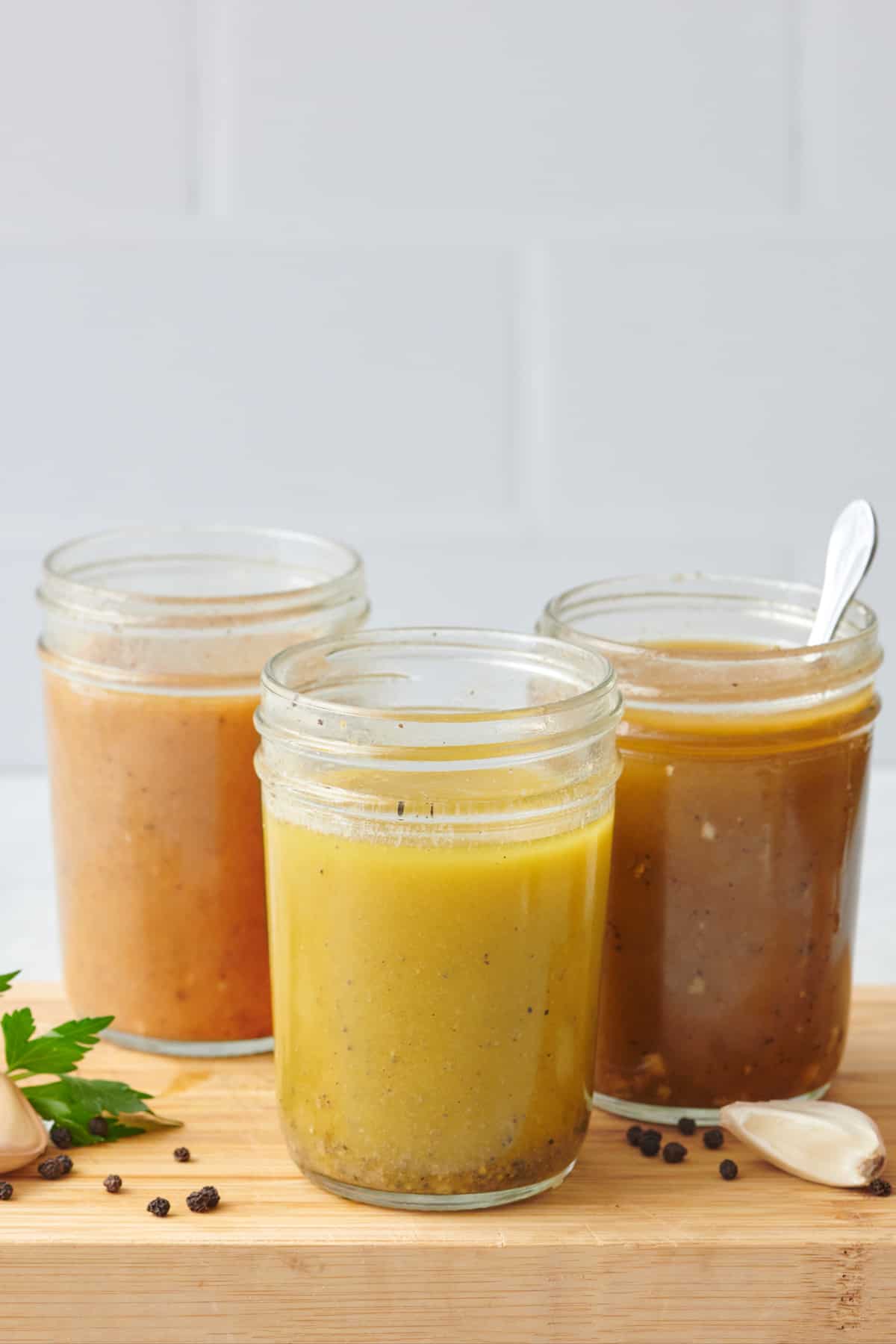
Jump to Section
Learning how to make a vinaigrette is a must, in my opinion. There are so many different use for it; whether you’re tossing it with a fresh garden salad, drizzling it over roasted veggies, or using it as a marinade, this vinaigrette is all about making your dishes pop. The key is in the emulsion – getting that oil and vinegar to come together in a smooth blend. And the best part? You can tweak a homemade vinaigrette to your taste. Want it tangier? Add a bit more vinegar. Love garlic? Go ahead and add that extra clove. This vinaigrette isn’t just a recipe; it’s a base for anything you need it for. So, grab your ingredients, and let’s shake up something delicious!
Why learn how to make vinaigrette dressing
- Make it uniquely yours. Learning how to make a vinaigrette at home allows you to customize it based on your taste preferences. Add a touch of honey for sweetness or a hint of fresh herbs for a burst of flavor. Experiment with different kinds of vinegar, oils, and flavors to create a dressing that suits your dishes and taste buds.
- Cost-effective choice. Making your own vinaigrette is a budget-friendly option in the long run compared to store-bought dressings. Plus, it’s not full of additives you can’t pronounce.
- Skip the last-minute grocery runs. Knowing how to make a vinaigrette can be a lifesaver when you need a last-minute solution. With basic pantry staples, you can create a flavorful vinaigrette on demand.
- Ensures quality control. Many store-bought alternatives are filled with thickeners, gums, and other additives that you can avoid by making your own with better-for-you ingredients.
Ingredients to make a vinaigrette
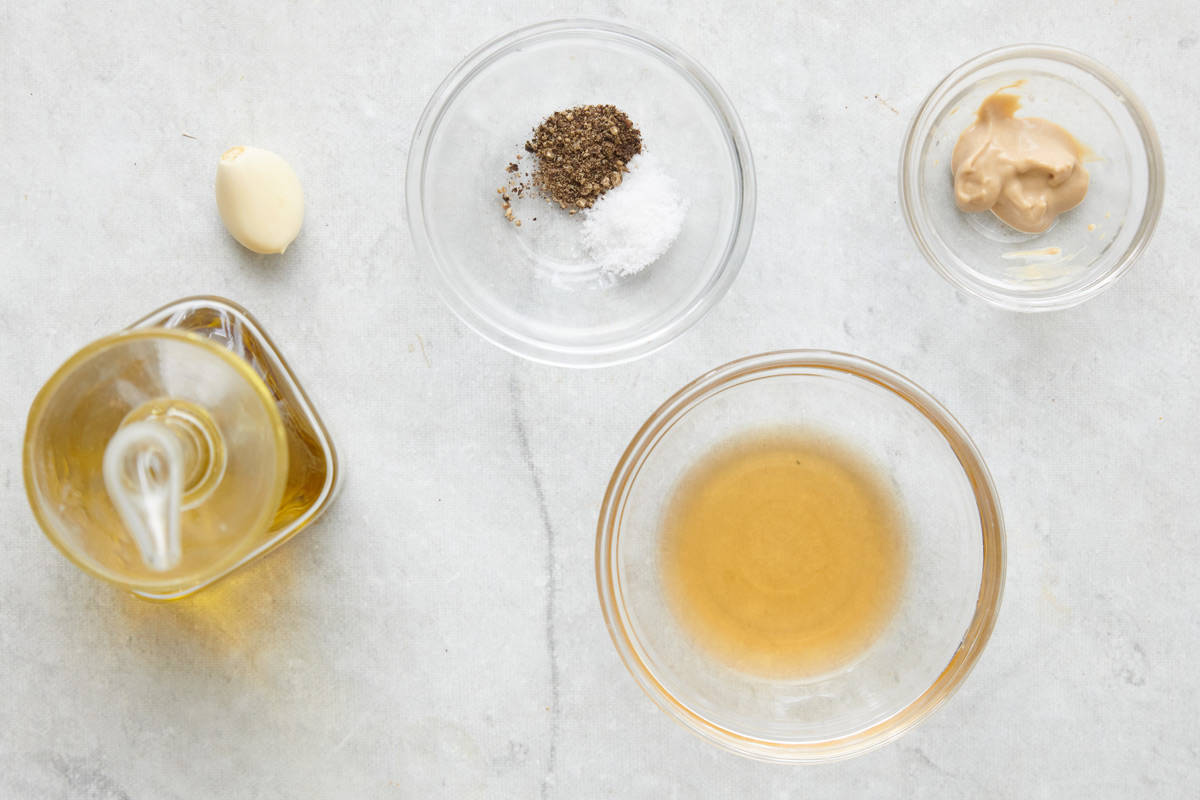
- Vinegar: The vinegar serves as the acidic component in the vinaigrette, providing a tangy and bright flavor. Depending on the recipe and your taste preferences, you can use balsamic vinegar, red wine or white wine vinegar, or apple cider vinegar.
- Dijon mustard: Helps to emulsify the vinaigrette and create a smooth consistency. The tanginess also helps cut through the richness of the olive oil, balancing the overall flavor profile.
- Garlic: One minced garlic clove will add a subtle yet aromatic flavor to the vinaigrette.
- Salt and black pepper: The salt enhances the other flavors in the vinaigrette dressing, adding balance and depth, while the pepper adds a touch of heat.
- Extra-virgin olive oil: The oil is emulsified with the other ingredients, offering a very silky texture and deeply flavored vinaigrette.
How to make a vinaigrette
- Place the vinegar, garlic, mustard, salt, and pepper in a small jar.
- Slowly drizzle in the olive oil while whisking.
- Seal the jar and shake vigorously until the dressing has thickened and looks smooth and well combined.
- Taste the vinaigrette and adjust the seasoning, adding more salt, pepper, or vinegar if needed. Add more olive oil if the vinaigrette is too tangy.
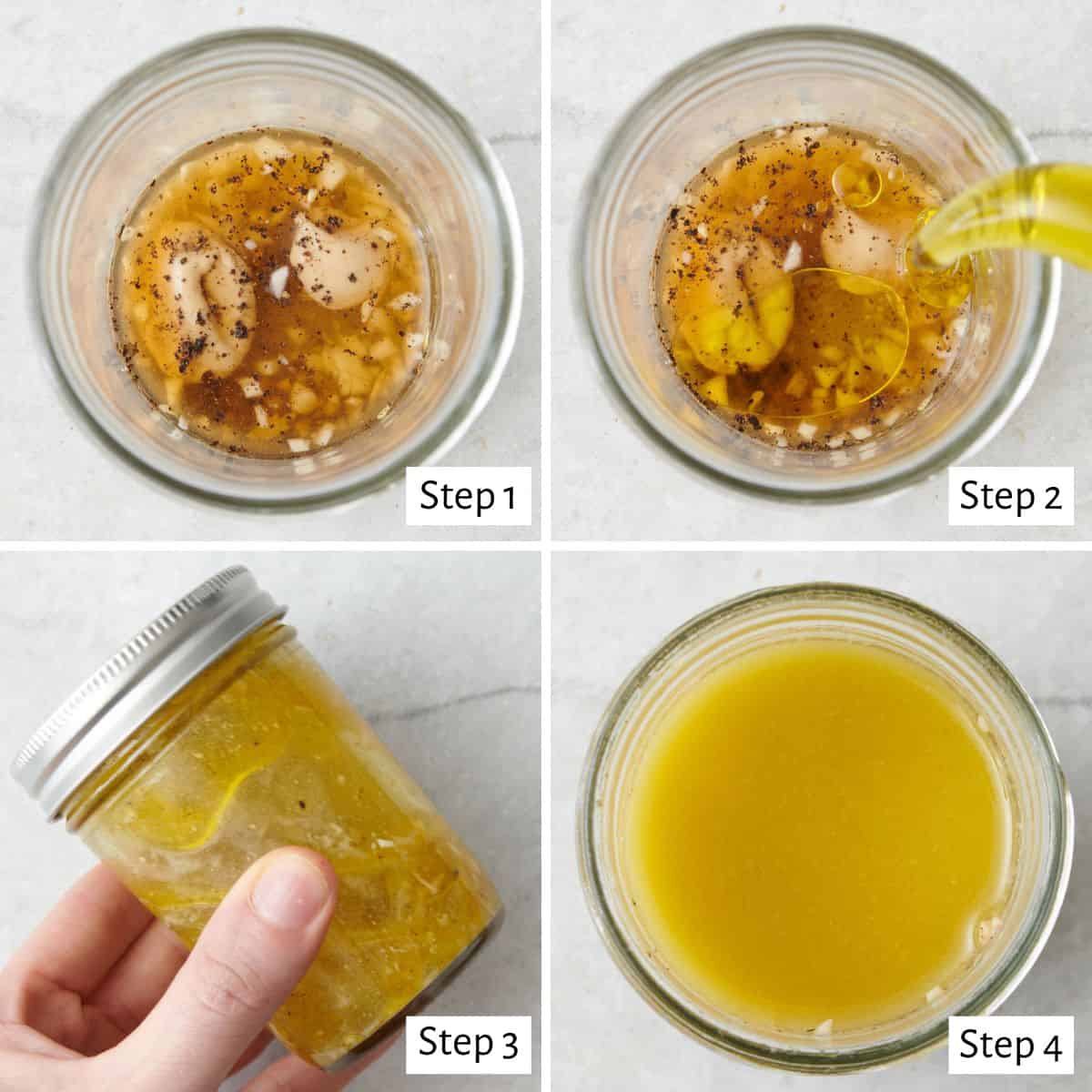
Tips for making a vinaigrette dressing
- Start with room-temperature ingredients. The vinaigrette ingredients are typically room temperature anyway, but it’s important to note that if they are chilled, it will be hard to incorporate and emulsify.
- Use good quality olive oil. Choose the best extra-virgin olive oil, as the flavor will impact the overall taste. Look for one with a fresh and robust profile, and make sure it’s not cut with any other cheaper oils like canola oil.
- Experiment with vinegars. Try different types of vinegar to customize the dressing to your liking, as each vinegar adds a unique flavor dimension.
- Adjust garlic as desired. If you’re not a fan of strong garlic flavor, feel free to skip the minced garlic or use a smaller amount. You can also use garlic powder to give a subtle garlic flavor but without the pungency.
- Customize to your taste. Use this as a versatile base to make your own unique vinaigrette dressing. Too tangy for your taste buds? Add a touch more olive oil. Too rich? Cut with an additional splash or two of vinegar. Tastes bland? Enhance the overall flavor with a pinch of salt or add a touch of honey for sweetness.
Recipes to make with vinaigrette dressing
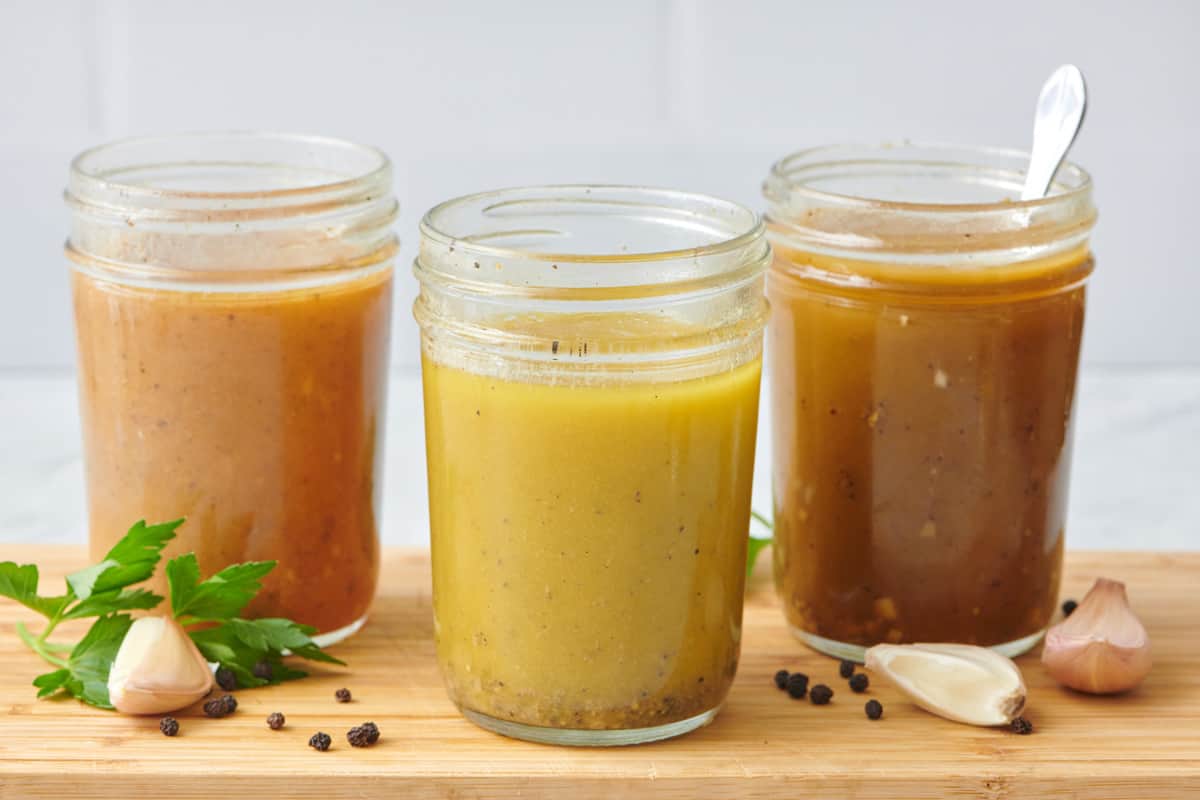
How to store vinaigrette dressing?
Store any leftover vinaigrette in a tightly sealed half-pint mason jar in the refrigerator. Bring the vinaigrette to room temperature and shake the jar before using to redistribute some ingredients that may have separated and settled to the bottom.
How long will a vinaigrette last in the fridge?
When properly stored, vinaigrette, as written in the recipe card, will last in the fridge for up to 5 days. Vinaigrette made without fresh garlic can last up to 2 weeks in the fridge. Add the garlic just before serving.
Can I freeze vinaigrette dressing?
Yes, you can freeze the vinaigrette, but the texture may not be the same after thawing. For best results, whip up a batch of vinaigrette dressing as needed and store any leftovers in the fridge.
Frequently asked questions
Absolutely! This vinaigrette is great to make in advance as the flavors meld and intensify over time. I recommend adding the minced garlic just before serving, though, to prolong the shelf life of the vinaigrette. You can make the dressing (without garlic) up to 2 weeks in advance and store it in the fridge.
Typically, you want to use a 3 to 1 ratio of oil to vinegar for the proper balance of flavors in a vinaigrette. That means for every one tablespoon of vinegar, you want to use 3 tablespons of oil. However, you can adjust it based on your personal taste preferences.
Yes, the vinaigrette can double as a flavorful marinade for meats, seafood, or vegetables. But if you are looking for a mouthwatering variety to flavor your meats, you’ll love these 4 flavors of easy chicken marinade recipes.
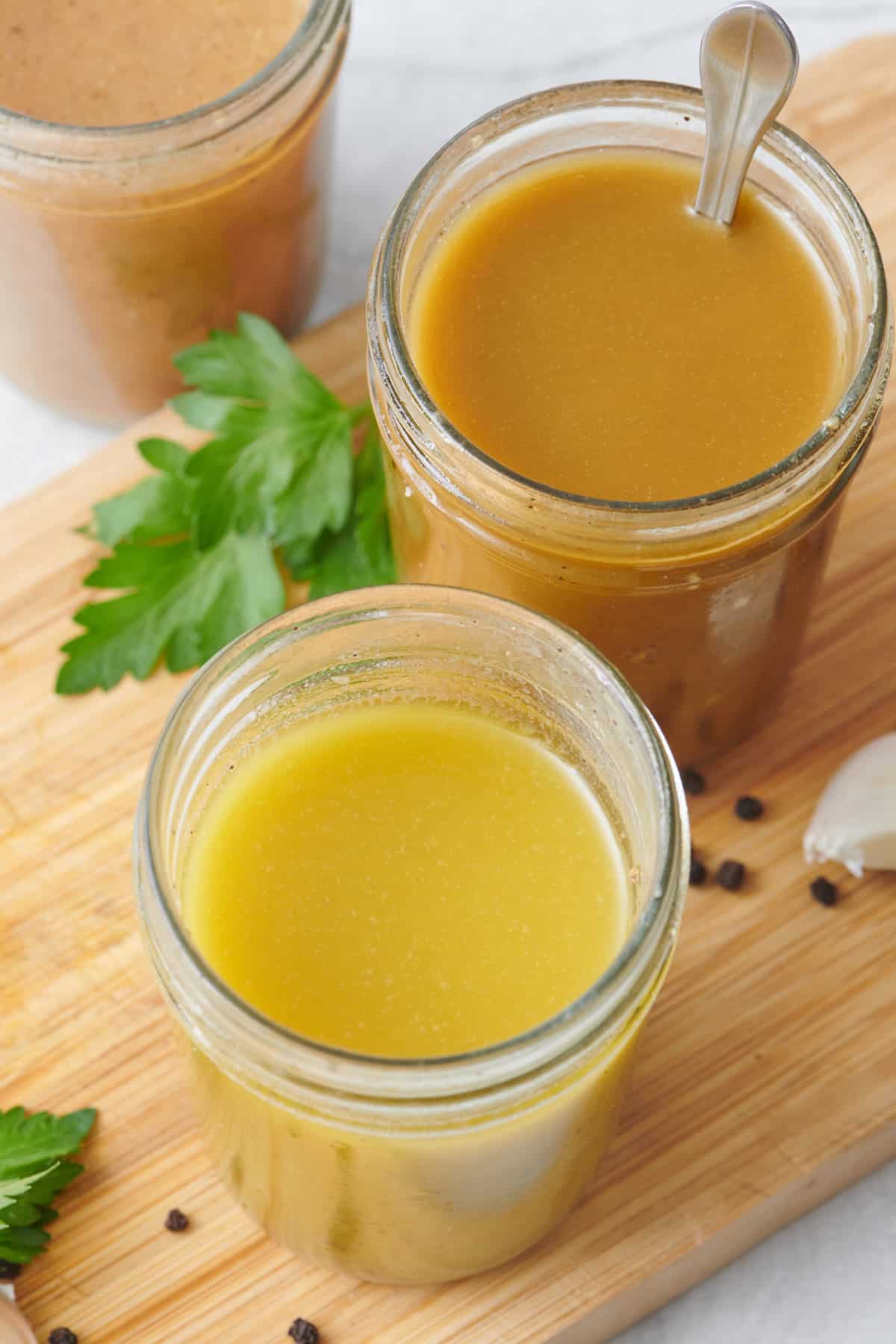
Learning how to make a vinaigrette dressing is a simple kitchen skill that makes your salads shine with freshness and flavor. Knowing this simple skill not only adds irresistible flavor to your dishes but proves to be a budget-friendly and convenient choice. No more last-minute grocery runs for a bottle of dressing when you can whip a batch in minutes!
More cooking tutorials:
- How to Make Salad Dressing
- How to Make Tahini Dressing
- How to Make Croutons
- How to Make Balsamic Glaze
- How to Make Chimichurri
- How to Make Spicy Mayo
- How to Pickle Red Onions
- How to Make Candied Walnuts
If you found this tutorial for How to Make Vinaigrette helpful or if you try any recipe on Feel Good Foodie, then don’t forget to rate the recipe and leave a comment below! It helps others who are thinking of trying out this tutorial and we would love to hear about your experience. And if you snapped some shots, share it on Instagram so we can repost on Stories!

How to Make Vinaigrette
Ingredients
- 1 tablespoon vinegar
- 1 small garlic clove minced (optional)
- ½ teaspoon Dijon mustard
- ¼ teaspoon salt
- ¼ teaspoon black pepper
- 3 tablespoons extra-virgin olive oil
Instructions
- Place the vinegar, garlic, mustard, salt and pepper in a small jar.
- Slowly drizzle in the olive oil while whisking or shaking the jar vigorously until the dressing has thickened and looks smooth and well combined.
- Taste the vinaigrette and adjust the seasoning, adding more salt, pepper, or vinegar if needed or adding more olive oil if it tastes too tangy.
Equipment
Notes
Nutrition
Nutrition information provided is an estimate. It will vary based on cooking method and specific ingredients used.





